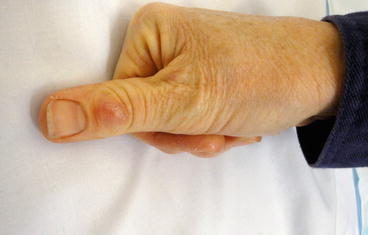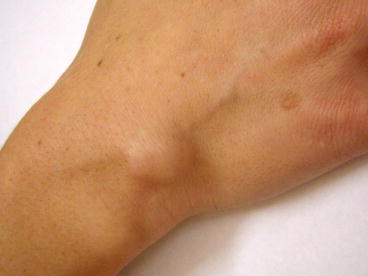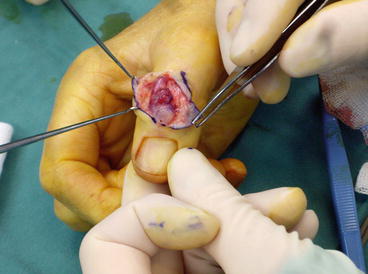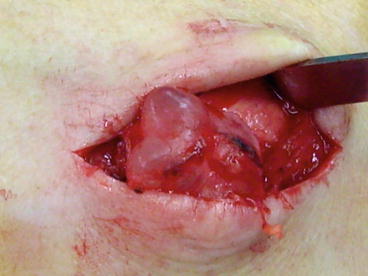Complications, risks, and consequences
Estimated frequency
Most significant/serious complications
Bleeding or hematoma formation
1–5 %
Infection
1–5 %
Inability to correct long-term symptoms (muscle weakness; anesthesia, or parasthesia)a (overall)
1–5 %
For long-standing symptomsa
20–50 %
Numbness and nerve problems
1–5 %
Rare significant/serious problems
Recurrence of symptoms
0.1–1 %
Severe neural injury—median or palmar branch of median nerve
0.1–1 %
Necrosis of skin edges/flapsa
0.1–1 %
Reformation of the carpal tunnela
<0.1 %
Necessity for skin flaps or grafts
<0.1 %
Dehiscence
<0.1 %
Less serious complications
Pain/discomfort/tenderness
Acute (<2 months)
20–50 %
Chronic (>2 months)
1–5 %
Reduced mobilitya
Acute (<2 months)
20–50 %
Chronic (>2 months)
0.1–1 %
Bruising
50–80 %
Wound scarring/deformity (poor cosmesis)
1–5 %
Perspective
Surgery for carpal tunnel release is usually very straightforward and complications are few and minor; however, serious complications can be debilitating and necessitate further surgery. Patients should be aware of the small chance of these serious complications. The decision for surgery must be balanced by the risks of the non-operative alternative of observation and conservative management. However, the presence of significant median nerve entrapment and conduction deficit(s) usually dictates earlier surgical intervention. Infection may be debilitating especially in diabetic or immunosuppressed individuals and occasionally lead to arm cellulitis and even systemic infections. Excessive pressure from bandages or tight sutures from swelling can lead to local necrosis of the wound edges. Bruising due to slow, concealed postoperative bleeding can be spectacular and extend along the tissue plane into the high forearm. Attention to hemostasis during and at the completion of the procedure, and releasing the tourniquet to ensure hemostasis at completion, can reduce the risk of postoperative bleeding.
Major Complications
Bleeding may rarely be severe, causing a concealed palmar hematoma and re-compressive median nerve symptoms and can rarely lead to the need for surgical drainage. Infection, especially in diabetics or immunosuppressed individuals, may lead to severe limb cellulitis and/or systemic and occasionally life-threatening infection. Injury to the median nerve is rarely severe, except when compression has severely damaged the nerve preoperatively. This may cause permanent sensory loss and/or motor deficit, which the patient should be warned about. Numbness is otherwise rarely an issue. If infection or necrosis occurs, poor cosmesis can result. Skin necrosis and dehiscence is rare, but can occur from tight bandaging, or failure to elevate the limb for the first 48–72 h postoperatively due to poor cooperation. Recurrent median nerve constriction can occur, necessitating re-operation, but is unusual and unpredictable. Infection of the dominant hand after surgery may significantly impact on function and employment. Stiffness can be a significant problem if immobility is prolonged, with loss of mobility.
Consent and Risk Reduction
Main Points to Explain
Discomfort
Bleeding
Infection
Numbness
Stiffness
Loss of mobility
Further surgery
Surgery for Tendovaginitis Stenosans (Trigger Finger) Release
Description
Local anesthesia, axillary arm block, ischemic arm block, or general anesthesia can be used. The aim is to release the constriction of the flexor profundus tendon by longitudinally incising the constricting tunnel of the tendon sheath. This problem typically involves the ring finger (fourth digit), but other fingers can be involved, especially in diabetics who may have multiple digits involved.
Anatomical Points
The constricting tunnel of the flexor tendon sheath typically lies over the volar aspect of the head of the metacarpal bone of the ring finger. A nodule forms within the tendon proximal to the swollen and narrowed opening of the tendon sheath and “catches” on the narrowed tunnel of the tendon sheath during movement of the tendon/nodule through the sheath, causing a clicking or “trigger” effect. This classically occurs during extension from full flexion as the nodule is pulled through the constricted area of the sheath. Focal pressure over the palm against the metacarpal head from repetitive trauma to the tendon/sheath is thought to produce the nodule and constriction. The site and extent of compression/nodule formation can vary significantly between patients. The digital blood vessels and nerves usually lie more laterally to the median operative longitudinal incision through the constricted area of the sheath (Table 4.2).
Table 4.2
Surgery for Tendovaginitis stenosans (trigger finger) release estimated frequency of complications, risks, and consequences
Complications, risks, and consequences | Estimated frequency |
|---|---|
Most significant/serious complications | |
Bleeding or hematoma formation | 1–5 % |
Infection | 1–5 % |
Recurrence tendon sheath constriction | 1–5 % |
Numbness and nerve problems | 1–5 % |
Rare significant/serious problems | |
Severe neural injury—digital nerve | 0.1–1 % |
Necrosis of skin edges/flapsa | 0.1–1 % |
Necessity for skin flaps or grafts | <0.1 % |
Dehiscence | <0.1 % |
Less serious complications | |
Pain/discomfort/tenderness | |
Acute (<2 months) | 20–50 % |
Chronic (>2 months) | 1–5 % |
Reduced mobilitya | |
Acute (<2 months) | 20–50 % |
Chronic (>2 months) | 0.1–1 % |
Bruising | 50–80 % |
Wound scarring/deformity (poor cosmesis) | 1–5 % |
Drain tube(s)a | <0.1 % |
Perspective
Surgery for trigger finger release is usually very straightforward and complications are few and minor; however, serious complications can be debilitating and occasionally necessitate further surgery. Patients should be aware of the small chance of these serious complications. The decision for surgery must be balanced by the risks of the non-operative alternative of observation and conservative management. However, the presence of significant finger immobility or discomfort usually dictates earlier surgical intervention. Infection may be debilitating especially in diabetic or immunosuppressed individuals, occasionally leading to arm cellulitis and even systemic infections. Excessive pressure from bandages or tight sutures from swelling can lead to local necrosis of the wound edges. Bruising due to slow, concealed postoperative bleeding can cause hand swelling.
Major Complications
Bleeding may rarely be severe, causing a concealed palmar hematoma can rarely lead to the need for surgical drainage. Infection especially in diabetics or immunosuppressed individuals may be severe limb cellulitis and/or systemic and occasionally life-threatening infection. Injury to the digital nerve(s) is rare, except when severe scarring is present preoperatively. This may cause permanent sensory loss, which the patient should be warned about. Numbness is otherwise rarely an issue. If infection or necrosis occurs, poor cosmesis can result. Skin necrosis can occur from tight bandaging, or failure to elevate the limb for the first 48–72 h postoperatively due to poor cooperation. Recurrence of the tendon sheath constriction can occur necessitating re-operation, particularly in diabetics, but is unpredictable. Infection of the dominant hand after surgery may significantly impact on function and employment. Stiffness can be a significant problem if immobility is prolonged, with loss of mobility.
Consent and Risk Reduction
Main Points to Explain
Discomfort
Bleeding
Infection
Numbness
Stiffness
Loss of mobility
Further surgery
Surgery for Ganglion Excision
Description
Local anesthesia, axillary arm block, ischemic arm block, or general anesthesia can be used. The aim is to define the origin of the ganglion from the respective joint and excise the ganglion and its neck. Suturing of the fibrous joint capsule and the ganglion neck is often performed using absorbable sutures (Figs. 4.1, 4.2, 4.3, and 4.4).



Fig. 4.1
Ganglion of the right thumb dorsal interphalyngeal joint space

Fig. 4.3
Ganglion of the dorsum of the right carpus
Anatomical Points
The ganglion is formed by outpouching of the synovial membrane through the degenerated fibrous joint capsule and is filled by clear “jelly” fluid. It is connected to the joint space, or occasionally arises from a tendon sheath, by a narrow “neck.” This “neck” may be very narrow and long, such that the ganglion lies well away from the joint site of origin. For this reason careful clinical examination, particularly relating to the mobility and the likely site of origin of the ganglion is very useful for best placing the incision. In general, longitudinal incisions are preferred except perhaps over joint creases and can be designed to permit easy extension if the site of origin of the ganglion might be uncertain. The risk to digital nerves or vessels is determined by the site of the ganglion and incision chosen (Table 4.3).
Table 4.3
Surgery for ganglion excision estimated frequency of complications, risks, and consequences
Complications, risks, and consequences | Estimated frequency |
|---|---|
Most significant/serious complications | |
Bleeding or hematoma formation | 1–5 % |
Ganglion recurrence | 5–20 % |
Inability to correct long-term symptoms (pain)a | 1–5 % |
Numbness and nerve problems | 1–5 % |
Rare significant/serious problems | |
Infection | 0.1–1 %
Stay updated, free articles. Join our Telegram channel
Full access? Get Clinical Tree
 Get Clinical Tree app for offline access
Get Clinical Tree app for offline access

|

